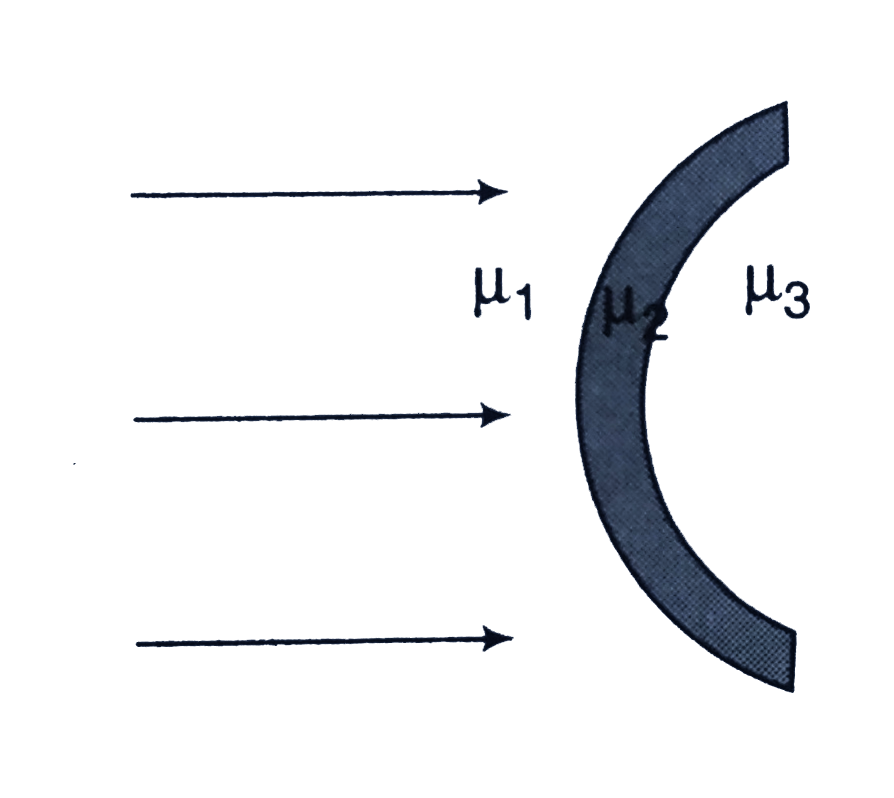In the figure, light is incident on a thin lens as shown. The radius of curvature for both the surfaces is R. Determine the focal length of this system. 
Video Solution
Text Solution
(i) For refraction at the first surface of the lens
Here, u=−∞,R=+R
Suppose the first surface converges the incident parallel beam at a distance v1, assuming medium μ2 to be continuous.
As −μ1u+μ2v=μ2−μ1R
∴−μ1−∞+μ2v1=μ2−μ1R
or μ2v1=μ2−μ1R ...(i)
(ii) For refraction at second surface of the lens
−μ2u+μ3v=μ3−μ2R ...(ii)
The image formed by the first surface acts as virtual object for the second surafce and this second surface forms the image at the focus of the lens.
∴u=v1,v=+fandR=+R
From (ii), −μ2v1+μ3+f=μ3−μ2R ...(iii)
Adding (i) and (ii), we get
μ3f=μ2−μ1R+μ3−μ2R=μ3−μ1R
f=μ3Rμ3−μ1
|
Topper's Solved these Questions
- OPTICSBOOK - PRADEEPCHAPTER - OPTICSEXERCISE - Very short answer question
5 Videos
- OPTICSBOOK - PRADEEPCHAPTER - OPTICSEXERCISE - very short answer questions
1 Videos
- MAGNETIC EFFECT OF CURRENT AND MAGNETISMBOOK - PRADEEPCHAPTER - MAGNETIC EFFECT OF CURRENT AND MAGNETISMEXERCISE - Competition Focus (Multiple Choice Questions)
2 Videos
Similar Questions
Knowledge Check
Radius of curvature of a equi convex lens is R. Find focal length (n=32)
AR2B−R2CRD-RRadius of curvature of a equi convex lens is R. Find focal length (n=32)
AR2B−R2CRD-RA plano-convex lens is made of refractive index 1.6. The radius of curvature of the curved surface is 60 cm. The focal length of the lens is
A200 cmB100 cmC50 cmD400 cm
Find the focal length of the lens shown in the figure. The radii of curvature of both the surfaces are equal to R

View SolutionWhat is the refractive index of material of a plano-convex lens , if the radius of curvature of the convex surface is 10 cm and focal length of the lens is 30 cm ?
View SolutionA planoconvex lens is made of refractive index 1.6. The radius of curvature of curved surface is 60 cm. The focal length of the lens is
View SolutionA plano-convex lens is made of glass of refractive index 1.5. The radius of curvature of its convex surface is R. Its focal length is
View SolutionA plano-convex lens is made of glass of refractive index 1.5. the radius of curvature of its convex surface is R. its focal length is
View Solution

